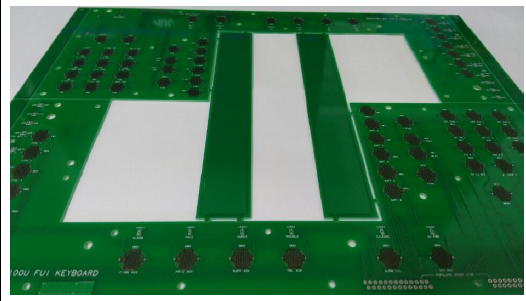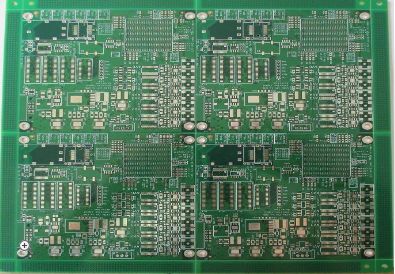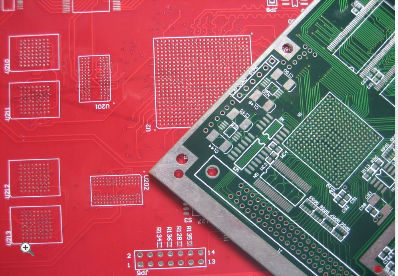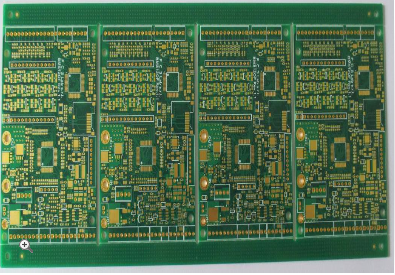-
 Agriculture
Agriculture
-
 Health-Care
Health-Care
-
 Environment
Environment
-
 Construction-Real-Estate
Construction-Real-Estate
-
 Tools-Hardware
Tools-Hardware
-
 Home-Garden
Home-Garden
-
 Furniture
Furniture
-
 Luggage-Bags-Cases
Luggage-Bags-Cases
-
 Medical-devices-Supplies
Medical-devices-Supplies
-
 Gifts-Crafts
Gifts-Crafts
-
 Sports-Entertainment
Sports-Entertainment
-
 Food-Beverage
Food-Beverage
-
 Vehicles-Transportation
Vehicles-Transportation
-
 Power-Transmission
Power-Transmission
-
 Material-Handling
Material-Handling
-
 Renewable-Energy
Renewable-Energy
-
 Safety
Safety
-
 Testing-Instrument-Equipment
Testing-Instrument-Equipment
-
 Construction-Building-Machinery
Construction-Building-Machinery
-
 Pet-Supplies
Pet-Supplies
-
 Personal-Care-Household-Cleaning
Personal-Care-Household-Cleaning
-
 Vehicle-Accessories-Electronics-Tools
Vehicle-Accessories-Electronics-Tools
-
 School-Office-Supplies
School-Office-Supplies
-
 Packaging-Printing
Packaging-Printing
-
 Mother-Kids-Toys
Mother-Kids-Toys
-
 Business-Services
Business-Services
-
 Commercial-Equipment-Machinery
Commercial-Equipment-Machinery
-
 Apparel-Accessories
Apparel-Accessories
-
 Security
Security
-
 Shoes-Accessories
Shoes-Accessories
-
 Vehicle-Parts-Accessories
Vehicle-Parts-Accessories
-
 Jewelry-Eyewear-Watches-Accessories
Jewelry-Eyewear-Watches-Accessories
-
 Lights-Lighting
Lights-Lighting
-
 Fabric-Textile-Raw-Material
Fabric-Textile-Raw-Material
-
 Fabrication-Services
Fabrication-Services
-
 Industrial-Machinery
Industrial-Machinery
-
 Consumer-Electronics
Consumer-Electronics
-
 Electrical-Equipment-Supplies
Electrical-Equipment-Supplies
-
 Electronic-Components-Accessories-Telecommunications
Electronic-Components-Accessories-Telecommunications
-
 Home-Appliances
Home-Appliances
-
 Beauty
Beauty
-
 Chemicals
Chemicals
-
 Rubber-Plastics
Rubber-Plastics
-
 Metals-Alloys
Metals-Alloys
- Masonry Materials
- Curtain Walls & Accessories
- Earthwork Products
- Fireproofing Materials
- Heat Insulation Materials
- Plastic Building Materials
- Building Boards
- Soundproofing Materials
- Timber
- Waterproofing Materials
- Balustrades & Handrails
- Bathroom & Kitchen
- Flooring & Accessories
- Tiles & Accessories
- Door, Window & Accessories
- Fireplaces & Stoves
- Floor Heating Systems & Parts
- Stairs & Stair Parts
- Ceilings
- Elevators & Escalators
- Stone
- Countertops, Vanity Tops & Table Tops
- Mosaics
- Metal Building Materials
- Multifunctional Materials
- Ladders & Scaffoldings
- Mouldings
- Corner Guards
- Decorative Films
- Formwork
- Building & Industrial Glass
- Other Construction & Real Estate
- Wallpapers/Wall panels
- HVAC System & Parts
- Outdoor Facilities
- Prefabricated Buildings
- Festive & Party Supplies
- Bathroom Products
- Household Sundries
- Rain Gear
- Garden Supplies
- Household Cleaning Tools & Accessories
- Lighters & Smoking Accessories
- Home Storage & Organization
- Household Scales
- Smart Home Improvement
- Home Textiles
- Kitchenware
- Drinkware & Accessories
- Dinnerware, Coffee & Wine
- Home Decor
- Golf
- Fitness & Body Building
- Amusement Park Facilities
- Billiards, Board Game,Coin Operated Games
- Musical Instruments
- Outdoor Affordable Luxury Sports
- Camping & Hiking
- Fishing
- Sports Safety&Rehabilitation
- Ball Sports Equipments
- Water Sports
- Winter Sports
- Luxury Travel Equipments
- Sports Shoes, Bags & Accessories
- Cycling
- Other Sports & Entertainment Products
- Artificial Grass&Sports Flooring&Sports Court Equipment
- Scooters
- Food Ingredients
- Honey & Honey Products
- Snacks
- Nuts & Kernels
- Seafood
- Plant & Animal Oil
- Beverages
- Fruit & Vegetable Products
- Frog & Escargot
- Bean Products
- Egg Products
- Dairy Products
- Seasonings & Condiments
- Canned Food
- Instant Food
- Baked Goods
- Other Food & Beverage
- Meat & Poultry
- Confectionery
- Grain Products
- Feminie Care
- Hair Care & Styling
- Body Care
- Hands & Feet Care
- Hygiene Products
- Men's Grooming
- Laundry Cleaning Supplies
- Travel Size & Gift Sets
- Room Deodorizers
- Other Personal Care Products
- Pest Control Products
- Special Household Cleaning
- Floor Cleaning
- Kitchen & Bathroom Cleaning
- Oral Care
- Bath Supplies
- Yellow Pages
- Correction Supplies
- Office Binding Supplies
- Office Cutting Supplies
- Board Erasers
- Office Adhesives & Tapes
- Education Supplies
- Pencil Cases & Bags
- Notebooks & Writing Pads
- File Folder Accessories
- Calendars
- Writing Accessories
- Commercial Office Supplies
- Pencil Sharpeners
- Pens
- Letter Pad/Paper
- Paper Envelopes
- Desk Organizers
- Pencils
- Markers & Highlighters
- Filing Products
- Art Supplies
- Easels
- Badge Holder & Accessories
- Office Paper
- Printer Supplies
- Book Covers
- Other Office & School Supplies
- Stationery Set
- Boards
- Clipboards
- Stamps
- Drafting Supplies
- Stencils
- Electronic Dictionary
- Books
- Map
- Magazines
- Calculators
- Baby & Toddler Toys
- Educational Toys
- Classic Toys
- Dress Up & Pretend Play
- Toy Vehicle
- Stuffed Animals & Plush Toys
- Outdoor Toys & Structures
- Balloons & Accessories
- Baby Food
- Children's Clothing
- Baby Supplies & Products
- Maternity Clothes
- Kids Shoes
- Baby Care
- Novelty & Gag Toys
- Dolls & Accessories
- Puzzle & Games
- Blocks & Model Building Toys
- Toddler Clothing
- Baby Clothing
- Kids' Luggage & Bags
- Arts, Crafts & DIY Toys
- Action & Toy Figures
- Baby Appliances
- Hobbies & Models
- Remote Control Toys
- Promotional Toys
- Pregnancy & Maternity
- Hygiene Products
- Kid's Textile&Bedding
- Novelty & Special Use
- Toy Weapons
- Baby Gifts
- Baby Storage & Organization
- Auto Drive Systems
- ATV/UTV Parts & Accessories
- Marine Parts & Accessories
- Other Auto Parts
- Trailer Parts & Accessories
- Auto Transmission Systems
- Train Parts & Accessories
- Universal Parts
- Railway Parts & Accessories
- Auto Brake Systems
- Aviation Parts & Accessories
- Truck Parts & Accessories
- Auto Suspension Systems
- Auto Lighting Systems
- New Energy Vehicle Parts & Accessories
- Auto Steering Systems
- Wheels, Tires & Accessories
- Bus Parts & Accessories
- Auto Performance Parts
- Cooling System
- Go-Kart & Kart Racer Parts & Accessories
- Air Conditioning Systems
- Heavy Duty Vehicle Parts & Accessories
- Auto Electrical Systems
- Auto Body Systems
- Auto Engine Systems
- Container Parts & Accessories
- Motorcycle Parts & Accessories
- Refrigeration & Heat Exchange Equipment
- Machine Tool Equipment
- Food & Beverage Machinery
- Agricultural Machinery & Equipment
- Apparel & Textile Machinery
- Chemical Machinery
- Packaging Machines
- Paper Production Machinery
- Plastic & Rubber Processing Machinery
- Industrial Robots
- Electronic Products Machinery
- Metal & Metallurgy Machinery
- Woodworking Machinery
- Home Product Manufacturing Machinery
- Machinery Accessories
- Environmental Machinery
- Machinery Service
- Electrical Equipment Manufacturing Machinery
- Industrial Compressors & Parts
- Tobacco & Cigarette Machinery
- Production Line
- Used Industrial Machinery
- Electronics Production Machinery
- Other Machinery & Industrial Equipment
- Camera, Photo & Accessories
- Portable Audio, Video & Accessories
- Television, Home Audio, Video & Accessories
- Video Games & Accessories
- Mobile Phone & Accessories
- Electronic Publications
- Earphone & Headphone & Accessories
- Speakers & Accessories
- Smart Electronics
- TV Receivers & Accessories
- Mobile Phone & Computer Repair Parts
- Chargers, Batteries & Power Supplies
- Used Electronics
- VR, AR, MR Hardware & Software
- Projectors & Presentation Equipments
- Other Consumer Electronics
- Cables & Commonly Used Accessories
- Computer Hardware & Software
- Displays, Signage and Optoelectronics
- Discrete Semiconductors
- Wireless & IoT Module and Products
- Telecommunications
- Connectors, Terminals & Accessories
- Development Boards, Electronic Modules and Kits
- Circuit Protection
- Sensors
- Isolators
- Audio Components and Products
- Integrated Circuits
- Power Supplies
- Relays
- RF, Microwave and RFID
- Electronic Accessories & Supplies
- Passive Components
- PCB & PCBA
- Air Quality Appliances
- Home Appliance Parts
- Heating & Cooling Appliances
- Small Kitchen Appliances
- Laundry Appliances
- Water Heaters
- Water Treatment Appliances
- Refrigerators & Freezers
- Personal Care & Beauty Appliances
- Major Kitchen Appliances
- Cleaning Appliances
- Second-hand Appliances
- Smart Home Appliances
- Other Home Appliances
- Energy Chemicals
- Inorganic Chemicals
- Basic Organic Chemicals
- Agrochemicals
- Admixture & Additives
- Catalysts & Chemical Auxiliary Agents
- Pigments & Dyestuff
- Coating & Paint
- Daily Chemicals
- Polymer
- Organic Intermediate
- Adhesives & Sealants
- Chemical Waste
- Biological Chemical Products
- Surface Treatment Chemicals
- Painting & Coating
- Chemical Reagents
- Flavor & Fragrance
- Non-Explosive Demolition Agents
- Other Chemicals
- Custom Chemical Services
Innovations in Multilayer PCB Designs for Enhanced Filter and Amplifier Applications
In the rapidly evolving landscape of electronics, multilayer printed circuit boards (PCBs) have emerged as a cornerstone for advancing the performance of critical components like filters and amplifiers. These sophisticated boards, composed of multiple conductive layers separated by insulating materials, enable designers to overcome the limitations of traditional single or double-layer PCBs. As modern applications—from 5G telecommunications to Internet of Things (IoT) devices—demand higher frequencies, greater integration, and improved efficiency, innovations in multilayer PCB designs are playing a pivotal role. By leveraging enhanced materials, precision manufacturing techniques, and intelligent layouts, engineers can now develop filters with sharper roll-offs and amplifiers with reduced noise and distortion. This article delves into the key innovations driving this progress, exploring how they contribute to superior performance in filtering and amplification circuits, ultimately empowering next-generation electronic systems.
Advanced Material Integration for High-Frequency Performance
The selection of materials in multilayer PCBs has undergone significant innovation to meet the demands of high-frequency filter and amplifier applications. Traditional materials like FR-4, while cost-effective, often exhibit limitations in terms of dielectric constant stability and loss tangent at elevated frequencies. To address this, recent developments have introduced specialized substrates such as polytetrafluoroethylene (PTFE), ceramic-filled laminates, and liquid crystal polymer (LCP). These materials offer low dielectric losses and consistent electrical properties across a wide frequency range, which is crucial for maintaining signal integrity in RF filters and high-gain amplifiers. For instance, in bandpass filters used in wireless communication systems, the use of low-loss materials minimizes insertion loss and improves selectivity, enabling clearer signal transmission.
Moreover, the integration of advanced materials extends beyond the substrate to include conductive layers and finishes. Innovations like low-profile copper foils and surface finishes such as immersion silver or ENIG (Electroless Nickel Immersion Gold) reduce skin effect losses and oxidation, further enhancing high-frequency performance. In amplifier circuits, these materials help maintain impedance matching and reduce parasitic capacitances, leading to higher efficiency and linearity. By carefully selecting and combining these materials in multilayer stacks, designers can achieve optimal thermal management and electromagnetic compatibility, ensuring that filters and amplifiers operate reliably in demanding environments.
Precision Layer Stackup and Impedance Control
One of the most critical aspects of multilayer PCB design for filters and amplifiers is the layer stackup configuration. Innovations in this area focus on achieving precise impedance control and minimizing crosstalk between layers. By strategically arranging signal, ground, and power planes, designers can create controlled impedance environments that are essential for high-speed analog and RF circuits. For example, in differential pair routing for amplifier inputs, a symmetric stackup with adjacent ground planes helps maintain consistent characteristic impedance, reducing signal reflections and improving gain flatness. This level of precision is often facilitated by advanced simulation tools that model electromagnetic behavior before fabrication, allowing for iterative optimizations.
Additionally, the use of blind and buried vias in multilayer designs has revolutionized interconnect density and signal integrity. These vias enable connections between specific layers without traversing the entire board, reducing stub lengths and parasitic inductances that can degrade filter responses. In applications like low-noise amplifiers (LNAs), this approach minimizes unwanted coupling and noise pickup, resulting in higher signal-to-noise ratios. Furthermore, innovations in dielectric thickness control allow for tighter tolerances in layer spacing, which is vital for designing embedded passive components—such as capacitive or inductive elements within the PCB layers—that enhance filter performance without adding discrete parts.
Embedded Component Technology for Miniaturization
The trend toward miniaturization in electronics has driven the adoption of embedded component technology in multilayer PCBs, offering significant benefits for filter and amplifier designs. By integrating passive components like resistors, capacitors, and inductors directly into the PCB layers, designers can reduce the overall footprint and improve electrical performance. For filters, this means creating distributed elements or lumped components with precise values that are less susceptible to external interference. Embedded capacitors, for instance, can provide decoupling close to amplifier ICs, suppressing power supply noise and enhancing stability in high-gain stages.
Beyond passives, recent innovations include the embedding of active devices, such as semiconductor dies, within the PCB substrate. This approach, known as system-in-package (SiP) or embedded die technology, allows for shorter interconnects and reduced parasitic effects, which is particularly advantageous for high-frequency amplifiers. In filter applications, embedded components enable the realization of complex topologies—like elliptic or Chebyshev filters—with improved roll-off characteristics and smaller form factors. This integration not only saves space but also enhances reliability by reducing the number of solder joints and external connections, making it ideal for compact devices in medical, automotive, and aerospace sectors.
Thermal Management and Reliability Enhancements
Effective thermal management is paramount in multilayer PCBs for filters and amplifiers, as these circuits often generate significant heat during operation. Innovations in thermal design include the incorporation of thermal vias, metal cores, and advanced heat-spreading materials. For example, in power amplifiers, thermal vias placed beneath heat-generating components facilitate efficient heat dissipation to outer layers or heatsinks, preventing thermal runaway and ensuring long-term stability. Multilayer designs also allow for dedicated thermal planes that distribute heat evenly, reducing hotspots that could alter filter characteristics or amplifier gain.
Reliability is further enhanced through innovations in material compatibility and manufacturing processes. The use of high-temperature laminates and conformal coatings protects against environmental factors like humidity and chemical exposure, which is crucial for filters in harsh industrial settings. Additionally, design techniques such as via-in-pad and filled vias improve mechanical strength and electrical continuity, reducing the risk of failure under thermal cycling. By combining these thermal and reliability features, multilayer PCBs can support demanding amplifier and filter applications with extended lifespans and consistent performance, even under extreme conditions.
REPORT































































































































































































































































































































































































































































































































































































